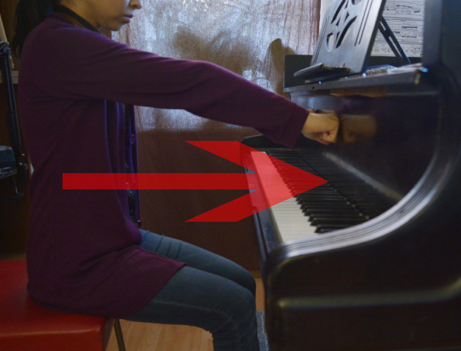
Piano playing requires extremely repetitive muscle movements. For example, if you play quarter notes consistently at 120BPM, after an hour, the repetition will require your muscles to contract and release 7,200 times...with eighth-notes 14,400 times… with sixteenth-notes 28,800 times! This many muscle movements add a lot of stress to your body and there is a high risk of injury if you do not pay attention to your physical needs. Musicians need to take care of their bodies, just like athletes do. Sadly, however, most of us do not listen to our body until we experience pain or discomfort. Take some time today to check in with your body and see if you can improve your body awareness, so that you can enjoy making music free of playing-related injuries and pain! In fact, having great body awareness will improve your playing!
This article introduces the ways to gain body awareness, release your neck tension, re-learn some of the familiar movements such as sitting down and standing up, and provides other resources that can help you with body awareness.
Exercise 1: Release Neck Tension
Most of the pain and tension in your body can be reduced just by paying attention to your NECK! You might not think you have tension in your neck, but let’s see if that’s really true...
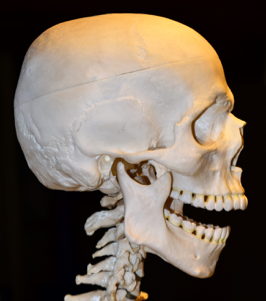
Question - Where do you think your head is attached to your spine? Close your eyes and imagine your skull…
Is the spine connected at the back of your head? No! That’s wrong! The spine is connected at the center of the skull, as shown in the photo.
Surprising? Most of us have an incorrect mental map of our body. Due to this inaccurate image, we have been living with our head slightly off balance. Because our head is very heavy, our neck muscles constantly work extra hard to sustain our head weight. This extra unnecessary work is increased when we hunch over a piano, computer, or even our phones! Since it has become a habit, we no longer feel the tension as discomfort.
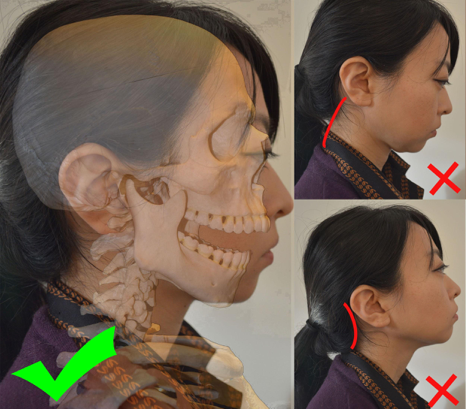
Let’s re-learn our correct neck position!
Now we have a correct map of how the skull is connected to the spine, we will visualize our head as a balloon. This balloon is attached to the spine. Close your eyes and feel the weight of your head. Let it wiggle slowly, rock side to side, forward and back.
Imagine that someone is pulling a string that is attached to the top of your head. Where the head rests now should be your neutral position. It might feel a bit strange at first because your neck muscles are not used to this position. Do this exercise before you start your practice session to retrain your correct head position.
Also while playing the piano, think of the balloon imagery to keep your neck loose. This also improves the way you play and read the music.
The bottom right photo shows a typical example of a pianist’s head position when they are reading music. Loosening the neck muscles also allows you to digest the visual information quickly and helps you with easier execution.
Exercise 2: Correct Your Sitting Position

Where and how you sit also contributes to the muscle tension. I have seen many pianists with small bodies (or hands) sit very close to the keys. However, you should always sit far enough that your knuckles touch the fallboard when you make your arms straight. Your bottom should then also sit at the edge of the chair. The great thing about this is that you can use your whole body weight when you have to play loud chords because you can lean onto the keys. Instead of forcing your arm or shoulder muscles, you can easily produce full tones by using your body weight.
Test to Check: Sit at the piano as usual. Can you stand up without shifting your body or feet? If not, it means that you are still sitting too close to the keyboard or too far back on the bench.
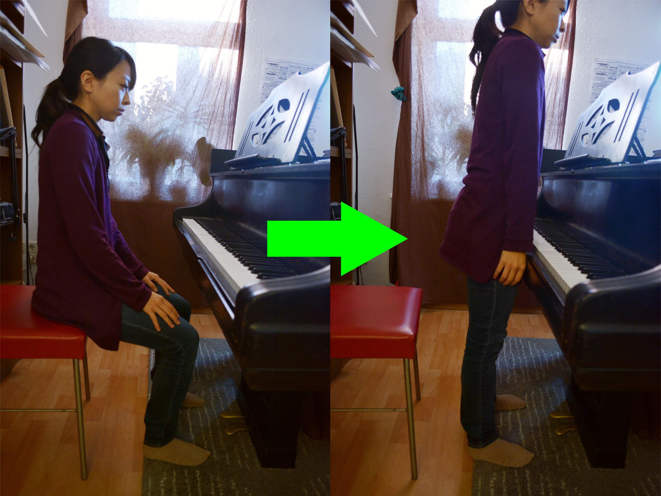
Piano playing is not only about the upper body; our legs also work to support our whole body. Once you find the proper sitting position, feel the whole sole of your feet and how they connect with the floor.
Now try to shift your body weight right and left. Do you still feel stable when you reach to the highest and lowest register with both hands?
Let your legs support your body. (Of course shifting the whole body will be necessary if you have to play for a long time in the extreme registers.)
Exercise 3: Sit With Correct Spine Alignment
We always say “sit tall” before playing the piano. But what does it mean to sit “tall”? Do we all know the correct “tall”-ness? Sitting tall means neither to tighten the back muscle nor to pull the chest forward. The act of sitting is such a familiar movement, but let’s check if you are doing it correctly.
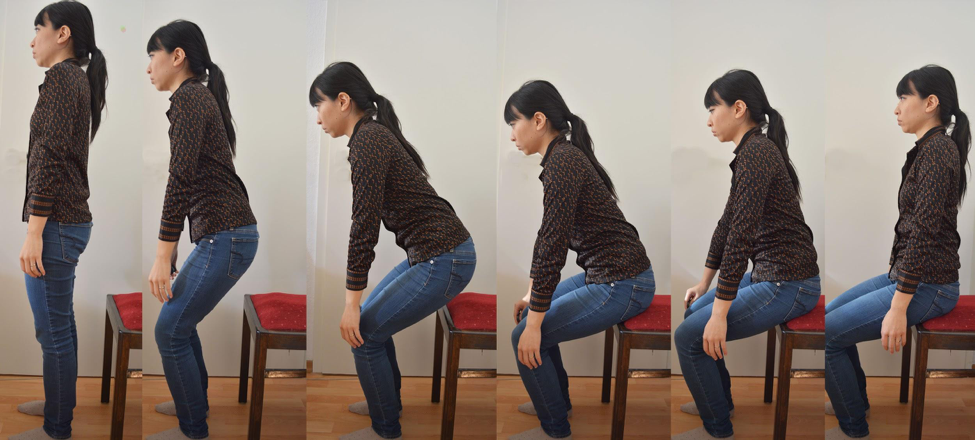
First stand up and release your arms, make them completely loose. Imagine your head to your tailbone connected as one long line. Your tailbone will lead your whole body to reach the bench. Bend your knees, let your arms fall down. When you bend your knees, your head should come forward as your hips pull behind. Continue thinking of the long line from the head to the tailbone and slowly arrive at the chair. When you come up to the sitting position, imagine you are building your spine with each vertebrae slowly lining up on top of each other. When you stand up, do this motion in the reverse order.
This sitting down and standing up exercise comes from Alexander Technique, which I will introduce at the end of the article. Of course studying with a certified Alexander Technique teacher will be the best option to gain the full results, but you can get the idea of the fluid body movement from this exercise.
Exercise 4: Opening Up the Chest
So many of our daily activities require our arms to be in front side of our body: driving, typing, washing dishes, etc. Because of this, the shoulder sockets are often facing the front instead of the side. As a result, the chest is collapsed and the chest muscles often stay contracted. Piano playing is also one of the activities that tighten them.
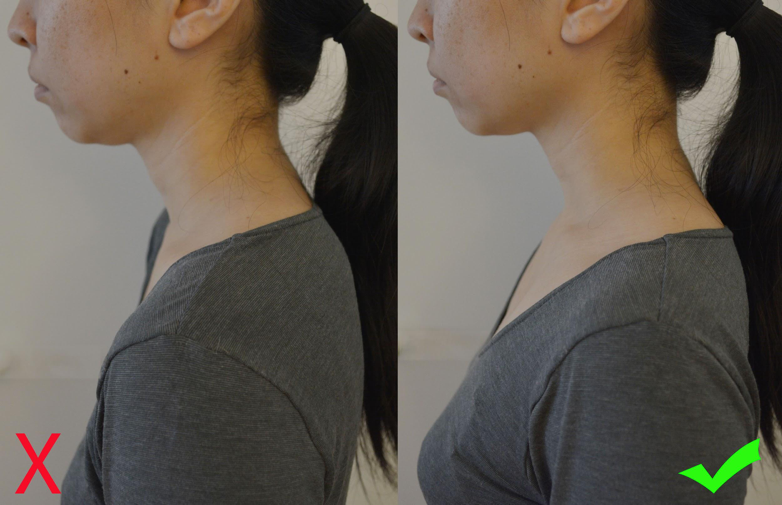
Before and after you practice the piano, lie down on the bed or floor for 3-5 minutes and take deep breaths. Feel the floor with your whole back of the shoulders and imagine your chest widening by thinking of the muscles stretching from the center to the edge of the shoulder. The key is not to forcefully pull back the shoulder, but to use your imagination to think of widening the muscles. Let your shoulders relax and let gravity help them fall down. This will allow these important muscles to relax and you can have correct shoulder positions again.
Exercise 5: Relax Your Jaw
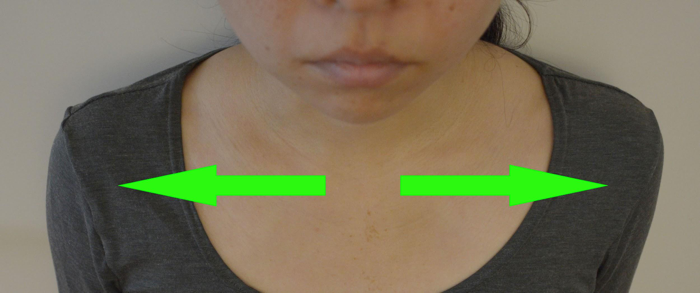
Piano playing requires digesting a lot of information at once. When you are reading the score, or working on a difficult phrases, what is your jaw doing? Are you clenching your teeth? Tension in your jaw leads to tension in your neck, then your neck tension leads to all kinds of other tension in your body. When you notice that you are clenching your jaw, open up the mouth lightly and practice the mouth open. You will be surprised how much tension your jaw is holding as soon as you relax the jaw muscle by opening your mouth.
Exercise 6: Make Use Out of What You Have - Arm Weight & Flexible Wrist
In my previous article, Tips for Adult Pianists, I introduced useful technical exercises that help not only with techniques but also with injury prevention. Check out these videos on Arm Weight and Flexible Wrists. While doing these exercises, always pay attention to your neck and keep the balloon imagery.
Other resources for Body Awareness
There are many other ways for you to be in-tune with your body. Here are some of the methods that are widely known and applied for pianists.
Alexander Technique is developed by an orator Frederick Matthias Alexander (1869-1955). The principle of Alexander Technique is to break our unconscious habits and re-learn the most relaxed and efficient use of our body. This technique mainly addresses neck tension as the cause of the whole body tension. Alexander Technique is thought to be the method that can be best learned by hands-on practice with a certified teacher.
Developed by a Ukrainian Physicist Mosché Feldenkrais (1904-1984), the Feldenkrais Method is an exercise therapy that introduces you how to minimize the muscular effort in movements. It comes from two stages of lessons: one is group lessons in which you gain body awareness through simple repetitive movements and the other is through private hands-on lessons. This method is often used for rehabilitation purposes or injury recovery.
If you are interested in improving your playing technique, especially being able to play fast phrases easily, you might want to check out the Taubman Method. It was developed by a Brooklyn, New York based piano teacher, Dorothy Taubman (1917-2013) and she helped numerous pianists who suffered from pain. Her idea, “tension-free technique = virtuosity” was revolutionary for those young piano students in NYC and many of them sought her guidance for becoming a true virtuoso.
Conclusion
These exercises and methods will help you gain body awareness. They involve simple familiar movements, but by paying attention to them, we are more likely to be in-tune with our body and prevent playing-related injuries. Piano playing involves highly repetitive muscle movement--in order for us to enjoy music making for the long term, checking in with your body is an obligation for pianists of any level. Revisit your unconscious habits and get rid of unnecessary muscle tension. You will be surprised how easy it feels to play the piano afterwards!

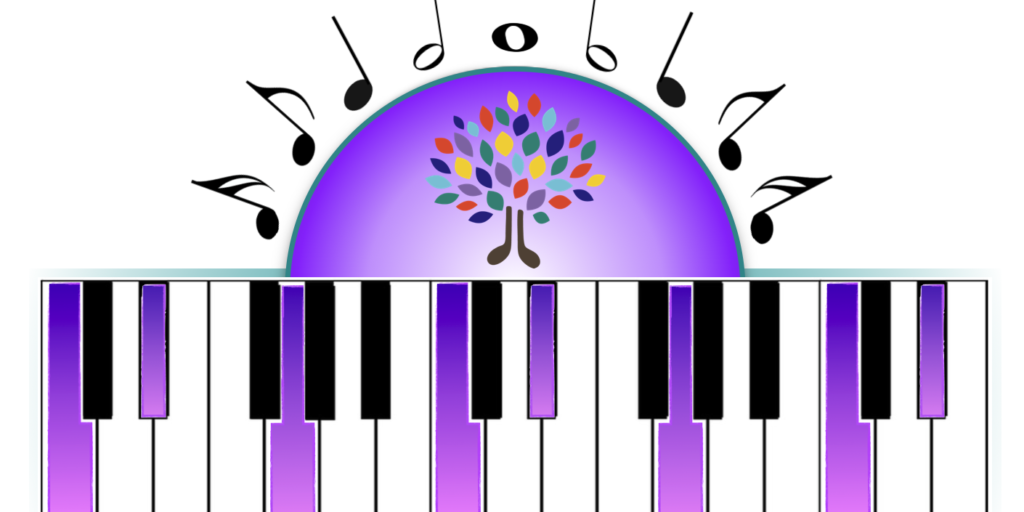

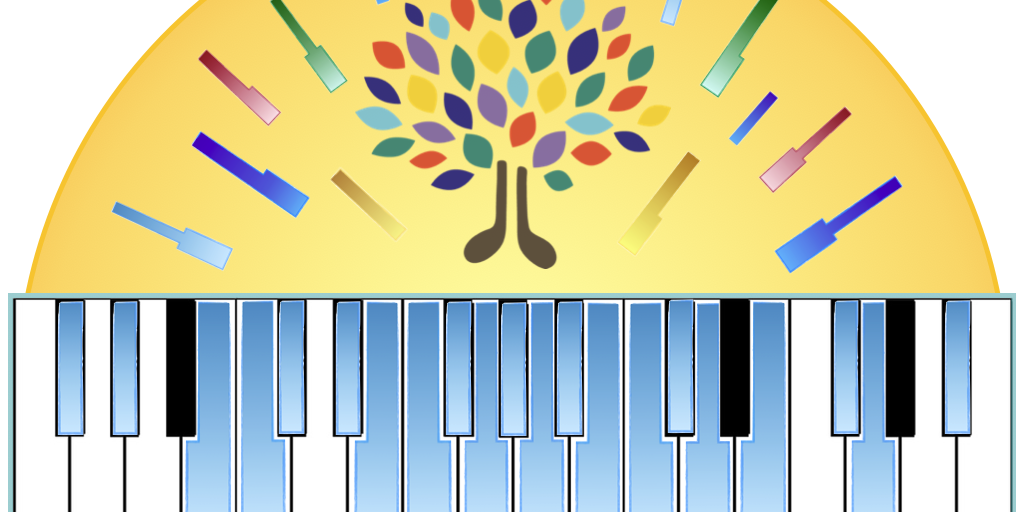
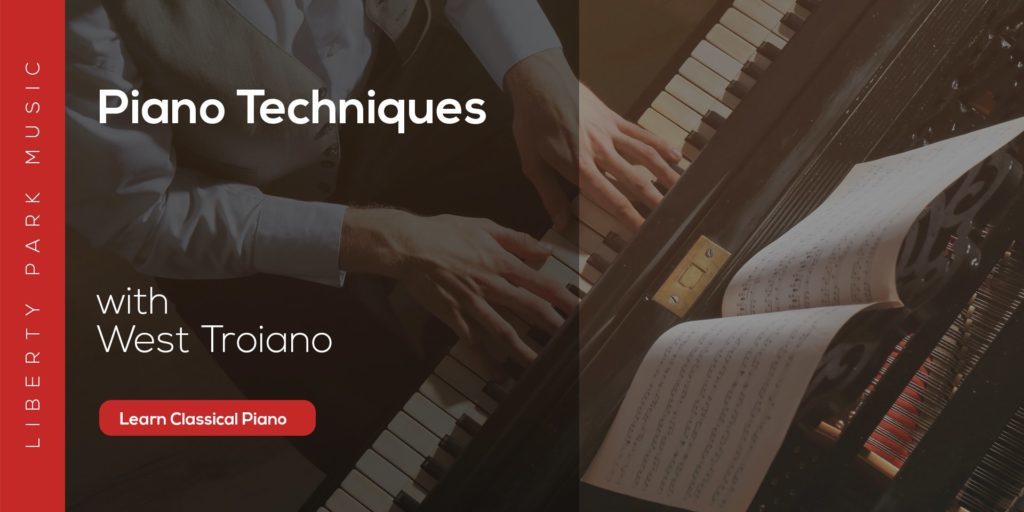

Do you teach in person and where are you located?